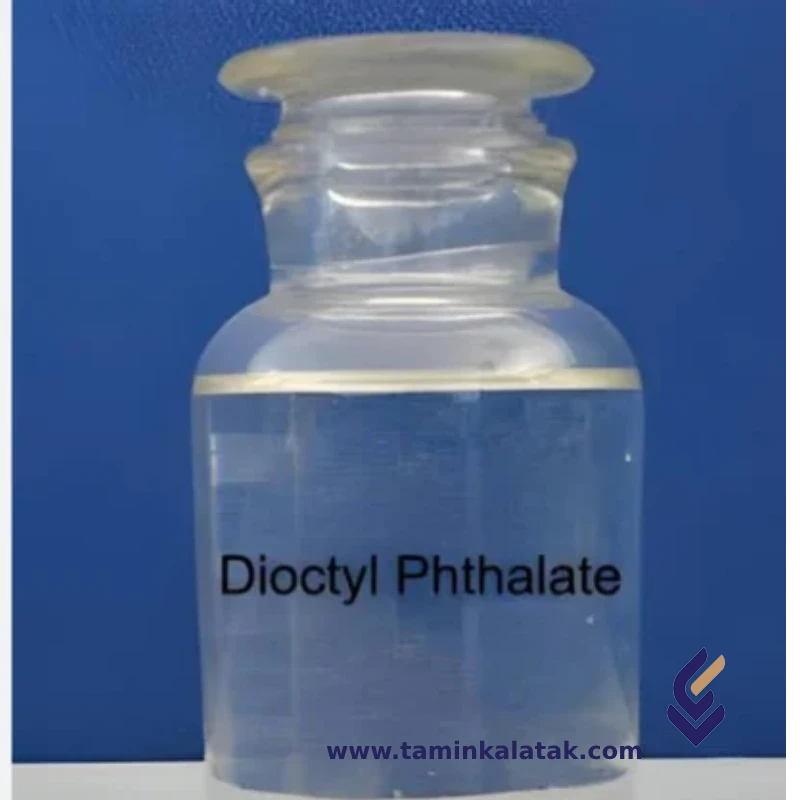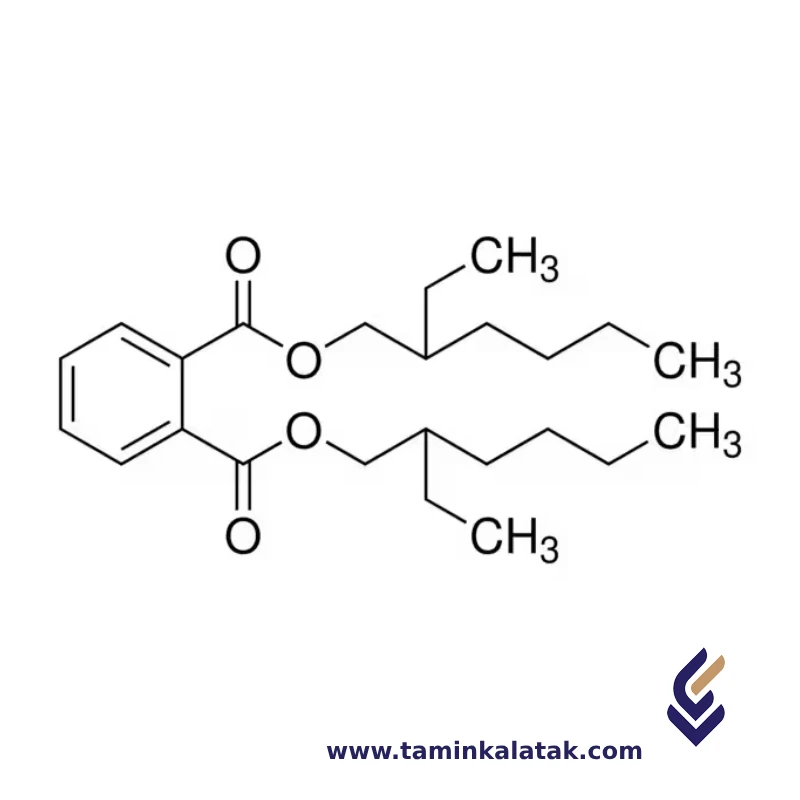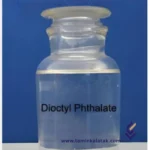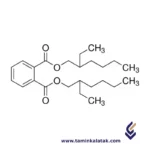Polymers are made up of very large molecules made up of many repeating units called monomers, which ultimately form this long polymer chain
Plasticizers are chemical additives added to polymers to increase their flexibility, ductility, and processability.
Di Octyl Phthalate (DOP)
Di Octyl Phthalate (DOP), also known as dioctyl phthalate, is a commonly used plasticizer, primarily in the production of flexible polyvinyl chloride (PVC) products.
Structure
Di-Octyl Phthalate (DOP) is an organic ester compound derived from phthalic acid and is commonly used as a plasticizer in the production of flexible plastics. Its structure consists of a central benzene ring attached to two ester groups, each linked to a long alkyl chain. These alkyl chains are each composed of eight carbon atoms (hence the “octyl” name), and they are connected to the phthalate group through ester bonds. The molecule’s overall structure is designed to provide flexibility to plastics, allowing the polymer chains to move more freely by increasing the distance between them, thus reducing intermolecular forces. This contributes to the plasticizing effect, making materials like polyvinyl chloride (PVC) more flexible and workable. The chemical formula of Di-Octyl Phthalate is C24H38O4.
Properties
Di-Octyl Phthalate (DOP), also known as dioctyl phthalate, is a commonly used plasticizer in the production of polyvinyl chloride (PVC) plastics. It is a clear, colorless to pale yellow oily liquid with a slight aromatic odor. DOP has a boiling point of about 384°C and a melting point below -30°C, with a density of around 0.986 g/cm³ at 20°C. It is practically insoluble in water but dissolves in most organic solvents like alcohol, benzene, and ether. Known for its good thermal stability, DOP is used to impart flexibility and durability to plastics, though it can degrade at high temperatures over time, releasing potentially harmful compounds. While it has low acute toxicity, prolonged or high exposure can lead to adverse health effects, particularly regarding reproductive toxicity, and it is considered a potential endocrine disruptor. Due to these concerns, DOP is increasingly being regulated, especially in children’s toys and food packaging. Its primary use is as a plasticizer in flexible PVC products such as flooring, cables, and synthetic leather, but it also finds application in rubber products. However, due to its low biodegradability and potential environmental impact, alternative plasticizers that are phthalate-free are being sought after.
Applications of Di-Octyl Phthalate (DOP)
- Plasticizer for PVC: Primarily used in flexible PVC products like flooring, synthetic leather, and plastic films.
- Rubber Industry: Used to enhance the flexibility and durability of rubber products.
- Electrical Cables: Increases the flexibility and weather resistance of electrical wires and cables.
- Cosmetics and Personal Care Products: Occasionally used in products like nail polish and lotions (though less common today).
- Coatings and Paints: Used as a plasticizer in certain types of paints and coatings for improved flexibility.
Advantages of Di-Octyl Phthalate (DOP)
- Improves Flexibility: Significantly enhances the flexibility and workability of PVC and other polymers.
- Good Thermal Stability: DOP has a relatively high tolerance to heat, which helps in applications exposed to elevated temperatures.
- Low Volatility: It has a low evaporation rate, making it effective over a long period.
- Cost-Effective: It is relatively inexpensive compared to some alternative plasticizers.
Disadvantages of Di-Octyl Phthalate (DOP)
- Health Concerns: DOP is classified as a potential endocrine disruptor and has been linked to reproductive toxicity.
- Environmental Impact: It is not readily biodegradable and can accumulate in the environment, posing risks to wildlife.
- Regulatory Issues: Increasing regulation and bans on the use of phthalates in consumer products, especially those in contact with food or children’s products.
- Migration Issues: DOP can migrate out of plastics over time, leading to potential contamination of surrounding environments or materials.
- Toxicity: Prolonged or high exposure to DOP can result in harmful effects, particularly through skin absorption, inhalation, or ingestion.
Applications
| Applications | , , , , , , |
|---|
Di Octyl Phthalate (DOP)
| Products | viscosity(Cp) | Density(g/Cm³) | Applications | Data Sheet | MSDS |
|---|---|---|---|---|---|
| Dioctyl phthalate (DOP) | 60-100 | 986,00 | Plasticizer in PVC Rubber Industry Electrical Cables Cosmetics Coatings and Paints |










